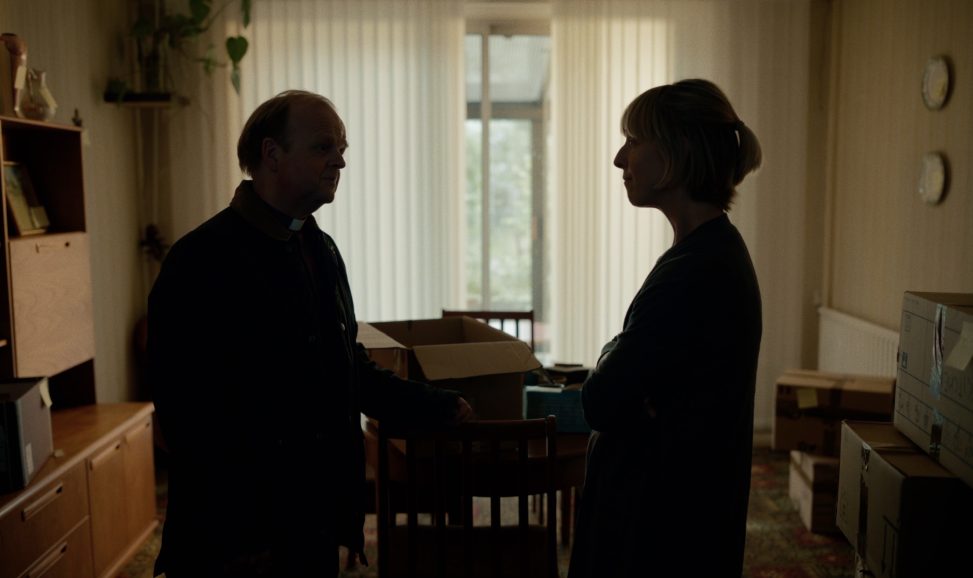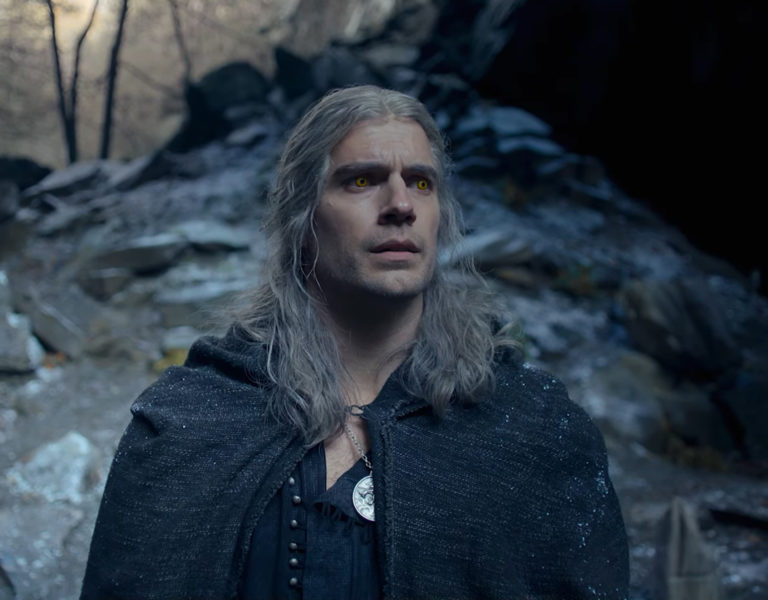MORAL DILEMMA
A right-to-die evangelist is forced to confront his faith and morality after meeting his latest client in a quietly powerful two-hander from filmmaking brothers Paul and Simon Wade, lensed by Donna Wade.
Despite a runtime of just 18 minutes, A Moral Man casts a nuanced spotlight on the complexities of assisted suicide. Philip (Toby Jones) is a priest who helps terminally ill patients pass away, but upon meeting the physically untroubled Helen (Claudia Blakley), he is faced with an ethical quandary.

The idea for the short came to the Wade brothers after reading an article about George Exoo, a priest and controversial assisted suicide activist who moved from helping people with terminal illnesses to die, to those with mental or undiagnosed illnesses. “It was this moral complexity that hooked us to the idea, and the power someone would have in being present – and in some cases actively helping – someone to die,” Simon Wade says.
Cinematographer Donna Wade (also Simon’s wife) remembers being “really surprised at how emotionally responsive I was to the story. Although short, it was impactful.”
Donna wanted to shoot large format for the first time on A Moral Man, opting for the ARRI Alexa Mini LF with Zeiss Supreme Primes and Glimmerglass from Focus Canning. “As we were shooting in one, mostly interior, location I was keen to use the format to stay close to our characters but also feel grounded within the context of the space and in doing so Helen’s character is at odds in this space,” she says.

The entire film was shot on location at a house in Eltham, southeast London, over three days of principal photography. It was important to the filmmakers that the house could be used for exterior and interior scenes to save time, and they also wanted the location to feel unassuming, as to not signal any significance to the audience too early on.
Donna aimed to bring a feeling of stillness to the film through her camerawork. “In the opening few scenes we have these conversations between Philip and Helen that feel quite stilted and a bit awkward and so we wanted to capture this feeling by keeping it a bit looser and on singles,” she adds. “The only time we go handheld is when Philip is alone in the bathroom and facing the dilemma that the whole film is based on.”

From a lighting perspective, the Wades were keen to augment the practicals in the night interiors using tungsten bulbs on dimmers, as well as LiteMats and tungsten lanterns just out of shot for emphasis. “Overall, in terms of tones, we had the warmer/pink interior light juxtaposed with the cooler tones coming through the windows,” Donna notes. “Ultimately we kept the final pivotal scene in the bedroom stark and cool, creating a bit of a clinical feeling which carries on through to the ending.”
The first scene, an exterior shot as Philip arrives at Helen’s house to help end her life, was shot late in the evening, and the DP wanted to continue this atmosphere for the first interior scene. “One story beat was that the front curtains were mostly drawn and only a small slit was open, due to how Helen’s character was almost hiding out,” she remembers. “I spoke with our designer Guy Thompson about using vertical blinds that led out to the conservatory area. These were to function in two ways – one, that we could tent out the conservatory to light day for night and secondly, that we could light the blinds to create depth in the background as opposed to just flat blacking them out.
“For the arrival scene, at late evening, I had planned to use a harder source (M18) through the blinds, however on the day the light didn’t work and so we had to improvise and use a SkyPanel instead which helped to sell the overall ambient tone we were looking for. We ND’d down the front window to knock back the level as we were shooting during a heatwave, and it was so bright outside. We then pushed a soft source through that (I think it was an Aputure 600D) to bring up the level inside.”

Cheat’s Karol Cybulski worked on the grade, building on Donna’s brief “for a more contrasty image and finding a nice deep black tone without it feeling crunchy. We also set a consistency in the colour contrast throughout until we get to the final bedroom scene, pushing it starker and cooler from that point onwards.”
The film is currently on the festival circuit, with stops at Vancouver and Manchester. “I’m probably most proud of the cast and crew,” Simon comments. “Making short films can be tricky and time-consuming with little to no pay, so it has to be a passion project. Everyone we collaborated with on the film was so dedicated and positive and immensely talented, so I’m always grateful that anyone would commit their time to one of our films.”
What’s it like working on a project with your other half? “Donna becomes very involved in every aspect of the film right from conception because I also talk to her about it as a husband, not a director,” her husband continues. “That could be where some of the challenges arise, when I’m on a film I struggle to switch off and so I might be trying to talk to her about a scene at 11pm while we’re in bed. But I like to think it’s quite a collaborative experience, we’ve worked together a lot, even before we became a couple and so I trust her creatively 100%.”











